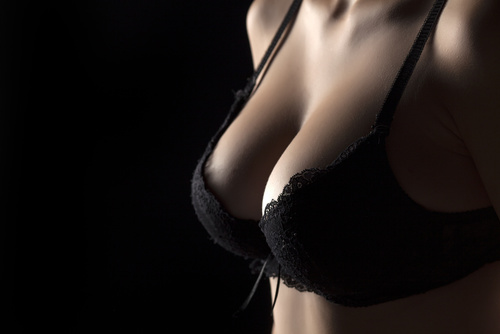Breast Augmentation Procedures in Rochester, Rochester Hills, Oakland Township, Lake Orion, Troy, and the rest of Southeast Michigan

TECHNIQUE
The incision used to insert the breast augmentation implants often depends on surgeon preference. The three most common incisions include inframammary (in the breast crease), periareolar (at the lower border of the areola) and axillary (in an armpit crease) or transumbilical (via the belly-button, the so-called TUBA procedure). Each incision has its advantages and disadvantages all of which will be thoroughly explained during the initial consultation. In many instances, the incision chosen is interplay between the patient’s wishes and the surgeon’s preferences.
Once the incision is made, the surgeon creates a pocket or space for the implant. This space can either be made above the pectoralis muscle (subglandular or below the breast gland tissue) or below the pectoralis muscle (submuscular). Once the pocket is created, the saline implants are inserted empty, they are then filled to their predetermined volume and the incisions are sutured closed. The shape and size of your implants will be determined during your preoperative consultation when you will have the opportunity to trial the various implants and choose for yourself the exact size you desire.
As of late November 2006, the FDA has granted approval for the use of silicone gel filled implants. This new generation of silicone implant is now available to those seeking primary breast augmentation that are 22 years old or older. Unlike saline implants, silicone implants are pre-filled thereby requiring a slightly longer incision. Transumbilical placement is not possible with silicone implants. For additional information about silicone gel implants refer to the LINKS section of this website.
During your initial consultation, information will be provided to you regarding the safety, risks and complications related to breast augmentation surgery and breast implants. Statistics regarding implant durability will be discussed and the implant-warranties will be reviewed. In some cases, depending on the droop and contour of your breasts, mastopexy or breast lift surgery may also be necessary. Recommendations will be made regarding specific techniques available to optimize the shape, fullness, and contour of your breasts.
Breast augmentation (augmentation mammaplasty) is a cosmetic procedure that uses breast implants to enlarge and shape the breasts. If you have small underdeveloped breasts, breasts of unequal size, or breasts that have shrunk or atrophied after childbearing, breast augmentation can help.
Breast augmentation will not only bring you greater freedom with fashion, but will also improve your self-image and make you feel better about yourself. For many women, along with a new figure comes a new attitude and enhanced self-confidence.
ANESTHESIA
Most breast augmentation procedures are performed under general anesthesia, so you will sleep through the entire procedure.
LENGTH OF PROCEDURE
45min. – 1hr.
RECUPERATION AND HEALING
Breast augmentation surgery is performed on an outpatient basis whether done at a hospital, outpatient surgery center, or office-based surgical suite. The incisions heal quickly. Steri-strips are removed in 7 days, with all sutures being dis-solvable. Initial discomfort is controlled with oral medications including pain relievers and muscle-relaxants. You are given intravenous antibiotics during the surgery and are given 10 days of oral antibiotics after the procedure. We recommend one week off from work however many patients return much earlier.
Implants placed below muscle require a period of settling to achieve their final shape and position. These sub muscular implants tend to appear “high” on the chest wall until the tissues and particularly the muscles relax and accommodate the implants. This “settling” may take 2-6 weeks to finalize. The results with saline filled implants placed under the muscle are more natural-looking implants with less incidence of rippling, folding and hardening as compared to above-muscle implants.
For implants placed above muscle, most typically silicone gel implants, recovery tends to be quick, easy, and minimally painful. Because the muscle in not involved, there is no settling time required, no need for massage exercises, and no activity restrictions. Recovery is typically 24 hours with immediate return to work and realization of aesthetic results in less than a week. Only minimal pain medications are prescribed without the need for muscle relaxers.
BEFORE SURGERY
- Stop taking aspirin and aspirin-containing products at least one week before surgery. A sheet of medications to avoid those that contain aspirin will be provided to you.
- If you develop a cold or illness prior to surgery, please notify us so that we may reschedule your procedure. Remember, this is elective surgery so everything should be optimized to prevent potential complications.
- Vitamins are important in healing. Take a multivitamin with iron as well as vitamin C.
- All other vitamin supplements and herbal medications should be stopped, since many can actually worsen bruising.
- Smoking is discouraged especially just prior to surgery.
- Make certain arrangements have been made to have someone pick you up after surgery and to stay with you for the first 24 hours if possible. Transportation services are available through our office.
- Fill all your prescriptions before the day of surgery. Bring your pain pills with you the day of surgery. You may be asked to take them after your procedure before you go home.
- You may want to purchase a stool softener such as Colace, as pain medication may cause constipation.
EVENING BEFORE SURGERY
- Eat lightly; avoid heavy, spicy, or gassy foods.
- Get a good night’s rest.
- Do not eat or drink anything after midnight prior to surgery. If your surgery is in the afternoon, do not eat or drink anything at least 8 hours prior to surgery. You may take any prescription medications with a sip of water only.
HOME AFTER SURGERY
- After any breast surgery, it is important to rest. While in bed, exercise your legs and feet to increase circulation to your legs.
- A small amount of bloody drainage through the bandage can occur.
- Limit your arm movements the first 48hrs after surgery. Do what is comfortable, and avoid activities that cause pain.
- Begin taking liquids slowly after surgery and advance your diet as tolerated. It is best to take your medications with food rather than on an empty stomach. Call Dr. Hainer if you have any problems with nausea after surgery. He will call in a prescription for an anti-emetic.
- Any discomfort should be relieved by the pain medication. Use the prescribed muscle relaxant around the clock for the first 10 days.
- It is normal to have pain and swelling after any breast surgery, however, call Dr. Hainer immediately if the breast swelling feels hard or appears much larger from one side to the other, or if one breast is significantly more painful than the other.
DEDICATED TO YOUR CARE
The entire surgical process begins well before your actual surgery date. Detailed descriptions of the entire pre and post-surgical course will be explained. Surgical consents will be signed once any and all questions are addressed. All prescriptions are provided and explained. During this entire surgical experience, Dr. Hainer and the entire staff at North Oakland Plastic Surgery is committed toward availability. Dr. Hainer will provide each patient with his personal beeper number that is available 24hrs a day. Your well-being and smooth recovery is of utmost importance to us all. We strive to meet all of your needs and make ourselves available at all times for any questions that may arise. Our goal through the entire process is to inform and educate you so that there are no surprises and that all your expectations are fulfilled. Care is individualized and personalized to make this entire experience a pleasant one.
THE RECOVERY PROCESS
You will be seen in the office 1-2 days after your breast augmentation procedure. The initial dressing is simply a 6 inch elastic Ace wrap used to compress the breasts. A banbeau wrap is also applied over the top edge of the ace wrap to gently provide downward pressure on the implants. Only Dr. Hainer or a staff member is allowed to remove the initial bandage.
The breasts initially will appear “high” and “flat” due to the bandage and the tightness of the muscles and tissue swelling. A cotton bra will be provided to you on your first visit. We recommend wearing this bra or a similar one for the first 2-3 weeks before purchasing new, expensive bras. You are allowed to shower once the initial bandage is removed on either post-op day 1 or 2. Paper steri-strips cover the incisions. They are allowed to get wet but should not be removed.
At one week, you will be seen for steri-strip removal. You will be instructed to begin once daily application of Scarguard on your incisions. An instruction sheet will be provided to you at this time describing daily massage of your implants. We encourage you to massage your breasts daily in the shower or tub. This will help to soften and shape the breasts and will help in settling of the implants. Underwire or push-up bras are to be avoided until the implants have had a chance to settle. Aerobic activities can be resumed at one week. To allow for implant settling, upper-body exercises, weight–training and swimming are restricted the first four to six weeks.
At 6 weeks, the implants have typically settled into their final position, your breasts have assumed their final shape and projection. The incisions are now nearly imperceptible. All activities can now be resumed. Underwire and push-up bras can now be worn. Sunscreen should be applied to all incisions for the first year to avoid darkening of the incisions if exposed to sun or a tanning bed.
GENERAL INFORMATION
- Bruising and swelling are expected. This will disappear in time. Be patient. It takes 6 weeks for breasts to regain their natural appearance, softness, and shape.
- Small areas of numbness are not uncommon and may last 6-12 weeks. Permanent nipple numbness is extremely rare.
- Sensations of sharpness and burning can occur during the healing process.
- You may drive as soon as you are comfortable enough to stop in an emergency and are no longer taking narcotic pain medications.
- Mild chest tightness can occur due to muscle spasms and swelling. It will respond well to the muscle relaxants prescribed to you.
- It is not uncommon to begin your menstrual cycle early due to the stress of surgery.
- In some patients, antibiotic use may lead to a vaginal yeast infection, which is easily treated with an over-the-counter anti-fungal preparation or Dr. Hainer will prescribe something for you.
